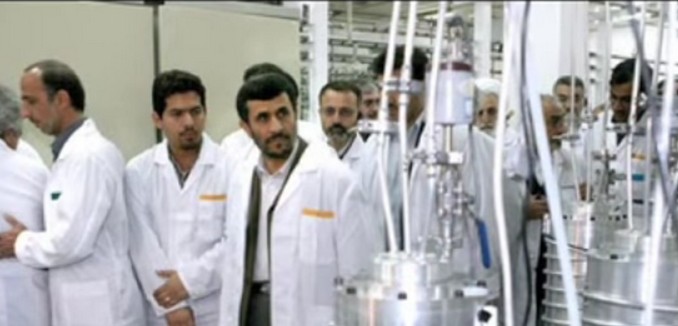Iran will not be obligated to account for all of its past nuclear work under the Joint Comprehensive Plan of Action (JCPOA), leading “a number of lawmakers to conclude the U.S. and world powers will never get to the bottom of the country’s alleged efforts to build an atomic weapon,” The Wall Street Journal reported (Google link) today.
Details of the report, which haven’t been previously disclosed, indicate the deal reached this month could go ahead even if United Nations inspectors never ascertain conclusively whether Iran pursued a nuclear weapons program—something Tehran has repeatedly denied.
The issue of Iran accounting for its alleged past work has emerged as a flash point in the debate between Congress and the White House over the July 14 agreement. Lawmakers initiated a two-month review of the accord last week, and many have demanded answers about Iran’s nuclear weapons history.
Under the deal, Tehran is required by mid-October to give U.N. inspectors access to Iranian scientists, military sites and documents allegedly tied to a covert nuclear-weapons program to have international sanctions repealed. Iran has balked at such requirements in the past.
At last week’s Senate Foreign Relations Committee hearing, reports surfaced of a side deal that will allow Iran to collect its own environmental samples from the Parchin military base, where the regime is believed to have tested detonators for a nuclear weapon, which will then be submitted to the International Atomic Energy Agency (IAEA) for review. This provision prompted demands from senators for the administration to explain how Iran could be trusted to provide untainted evidence and led Fred Fleitz, a former CIA intelligence analyst with experience “in the collection of environmental samples for investigations of weapons of mass destruction,” to call the provision a “dangerous farce.”
According to the Journal, the administration claims that fully accounting for Iran’s past nuclear work “wasn’t critical to verifying Iranian commitments in the future.” However, this reversal comes on the heels of a revelation that Syria still possesses chemical weapons, despite reports that their arsenal had largely been removed and destroyed. Part of the reason that inspectors were initially unable to ensure Syria’s full cooperation with efforts to confiscate its chemical weapons is because the Syrian government controlled access to inspectors, and because “Central Intelligence Agency analysts initially thought the declaration matched what they believed the regime had,” The Wall Street Journal reported (Google link).
In June, both the European Union and the International Atomic Energy Agency (IAEA) said that Iran’s explanation of its past nuclear weapons research was a requirement for any deal.
In March, former deputy director-general of the IAEA, Olli Heinonen, said in a conference call hosted by The Israel Project:
IAEA has verified how much nuclear material Iran has declared and confirmed those numbers. But IAEA has not been able yet to verify the completeness of Iran’s declaration. So we don’t know at this point of time whether all the uranium which is in Iran is really subject to IAEA verification. Same is with the enrichment program. They have produced a lot of centrifuges. Are these all the centrifuges installed and operating, which we see in Natanz? This, together with the military dimensions to understand what were the activities on high explosives, missile reentry vehicle which Iran seems to have done. All these three items – nuclear material inventory, all the centrifuges, and this PMD – they form a baseline for future monitoring.
In December of 2013, just after the Joint Plan of Action was signed, the United States’ lead negotiator, Wendy Sherman, similarly insisted in a Senate hearing that revealing the possible military dimensions of Iran’s nuclear program was essential to a deal.
There are three places in the agreement that speak to the possible military dimensions of Iran’s program. In the first paragraph, it talks about having the comprehensive agreement address all remaining concerns. That is a reference to their possible military dimensions. It talks about the need to address past and present practices, which is the IAEA terminology for possible military dimensions, including Parchin… So we have had very direct conversations with Iran about all of these. They understand completely the meaning of the words in this agreement, and we intend to support the IAEA in its efforts to deal with possible military dimensions, including Parchin.
[Photo: EurasiaNet / YouTube ]




